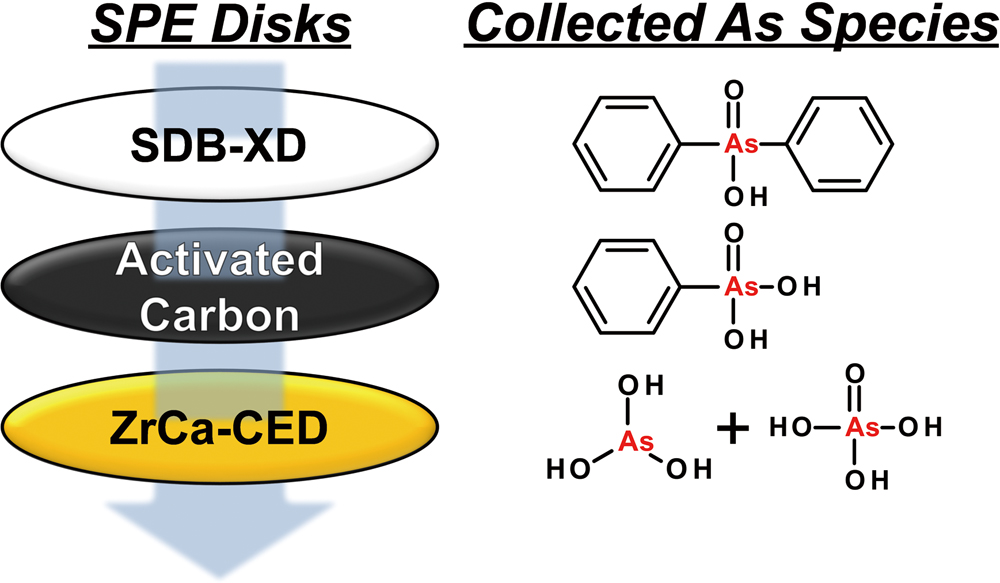抄録
A simple method of graphite-furnace atomic-absorption spectrometry (GFAAS) after solid-phase extraction (SPE) was developed for the determination of diphenylarsinic acid (DPAA), phenylarsonic acid (PAA), and inorganic arsenic (iAs) in drinking water. This method involves the simultaneous collection of DPAA, PAA, and iAs using three stacked SPE disks, i.e., an Empore SDB-XD disk (the upper layer), an activated carbon disk (the middle layer), and a Cation-SR disk loaded with Zr and Ca (ZrCa-CED; the lower layer). A 200-mL aqueous sample was adjusted to pH 3 with nitric acid and passed through the SPE disks at a flow rate of 15 mL min−1, to concentrate DPAA on the SDB-XD disk, PAA on the activated carbon disk, and iAs on the ZrCa-CED. The As compounds were eluted from the disks with 10 mL of ethanol containing 0.5 mol L−1 ammonia solution for DPAA, 20 mL of 1 mol L−1 ammonia solution for PAA, and 20 mL of 6 mol L−1 hydrochloric acid for iAs. The eluates of DPAA, PAA, and iAs were diluted to 20, 25, and 25 mL, respectively, with deionized water, and then analyzed by GFAAS. The detection limits of As (three-times the standard deviation (n = 3) of the blank values) were 0.13 and 0.16 μg L−1 at enrichment factors of 10 and 8, respectively, using a 200-mL water sample. Spike tests with 2 μg (10 μg L−1) of DPAA, PAA, and iAs in 200 mL of tap water and bottled drinking water showed good recoveries (96.1 – 103.8%).



